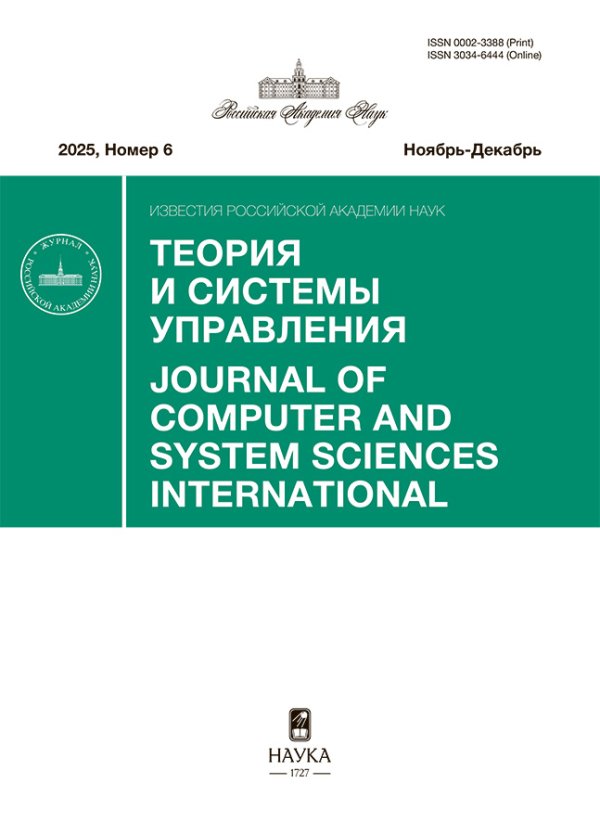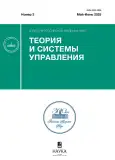PREDICTING THE NETWORK SERVICE QUALITY VIA THE LOG OF HARDWARE USAGE
- Authors: Grusho A.A.1, Zabezhailo M.I.1, Piskovski V.O.1,2, Timonina E.E.1
-
Affiliations:
- Federal Research Center “Informatics and Management” RAS
- Faculty of Computational Mathematics and Cybernetics, Lomonosov Moscow State University
- Issue: No 3 (2025)
- Pages: 91-98
- Section: ARTIFICIAL INTELLIGENCE
- URL: https://journals.rcsi.science/0002-3388/article/view/304410
- DOI: https://doi.org/10.31857/S0002338825030098
- EDN: https://elibrary.ru/bgogdd
- ID: 304410
Cite item
Abstract
About the authors
A. A. Grusho
Federal Research Center “Informatics and Management” RAS
Email: grusho@yandex.ru
Moscow, Russia
M. I. Zabezhailo
Federal Research Center “Informatics and Management” RAS
Email: m.zabezhailo@yandex.ru
Moscow, Russia
V. O. Piskovski
Federal Research Center “Informatics and Management” RAS; Faculty of Computational Mathematics and Cybernetics, Lomonosov Moscow State University
Email: vpiskovski@lvk.cs.msu.ru
Moscow, Russia; Moscow, Russia
E. E. Timonina
Federal Research Center “Informatics and Management” RAS
Email: eltimon@yandex.ru
Moscow, Russia
References
- Френкель С.Л., Захаров В.Н. Модель прогнозирования интернет-трафика // Искусственный интеллект и принятие решений. 2022. № 4. С. 66–77. https://doi.org/10.14357/20718594220407
- Лычева Е.О., Писковский В.О., Могиленец В.М. Прогнозирование временных характеристик прикладных сетевых сервисов // Тр. 5-й Междунар. конф. MODERN NETWORK TECHNOLOGIES (MONETEC-2024). М., Изд-во МГУ им. М.В. Ломоносова, 2024. С. 25–33.
- Lan X., Taghia J., Moradi F., Khoshkholghi M.A., Zec E., Mogren O., Mahmoodi T., Johnsson A. Federated Learning for Performance Prediction in Multi-operator Environments // ITU Journal on Future and Evolving Technologies. 2023. V.4. P. 166–177.
- Hu C.-H., Chen Z., Larsson E.G. Device Scheduling and Update Aggregation Policies for Asynchronous Federated Learning // IEEE 22nd International Workshop on Signal Processing Advances in Wireless Communications (SPAWC). Lucca, Italy, 2021. P. 281–285.
- Lee H.-S., Lee J.-W. Adaptive Transmission Scheduling in Wireless Networks for Asynchronous Federated Learning // IEEE Journal on Selected Areas in Communications. 2021. V. 39. № 12. P. 3673–3687.
- Almanifi O.R.A., Chow C.-O., Tham M.-L., Chuah J.H., Kanesan J. Communication and Computation Efficiency in Federated Learning: A survey // Internet of Things. 2023. V. 22.
- Lu R., Zhang W., Li Q., He H., Zhong X., Yang H. et al. Adaptive Asynchronous Federated Learning // Future Generation Computer Systems. 2024. V. 152. P. 193–206.
- Басок Б.М., Захаров В.Н., Френкель С.Л. Использование вероятностной модели вычислений для тестирования одного класса готовых к использованию программных компонентов локальных и сетевых систем // Информатика и ее применения. 2018. Т. 12. Вып. 4. С. 44–51. https://doi.org/10.14357/19922264180407
- Data Traces from a Data Center Testbed – Kaggle [электронный ресурс]. URL: www.kaggle.com/datasets/jaliltaghia/data-traces-from-a-data-center-testbed (дата обращения: 11.09.2023).
- Yanggratoke R., Ahmed J., Ardelius J., Flinta C., Johnsson A., Gillblad D., Stadler R.A. Service-agnostic Method for Predicting Service Metrics in Real Time // Intern. J. of Network Management. 2017. V. 28. № 2.
- Bishop C.M. Pattern Recognition and Machine Learning. N.Y.: Springer, 2006.
- Сайфутдинов Р.А. Исследование алгоритмов уменьшения размерности данных для задачи классификации. СПб.: СПбГУ, 2014.
- Hyperparameter Tuning: GridSearchCV and RandomizedSearchCV, Explained [электронный ресурс]. URL: www.kdnuggets.com/hyperparameter-tuning-gridsearchcv-and-randomizedsearchcv-explained (дата обращения: 24.12.2024).
- Grusho A., Grusho N., Zabezhailo M., Timonina E. On Some Possibilities of Using AI Methods in the Search for Cause-and-effect Relationships in Accumulated Empirical Data // Proc. 8th Intern. Scientific Conf. “Intelligent Information Technologies for Industry” (IITI 2024, Harbin, China, Nov. 1–7, 2024), Lecture Notes in Networks and Systems (LNNS) 1210. 2024. V. 2. Chap. 25. P. 280–290.
Supplementary files










